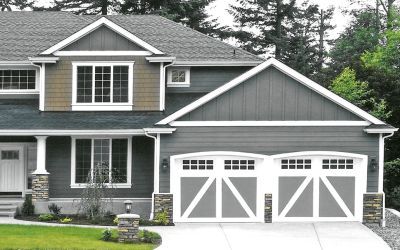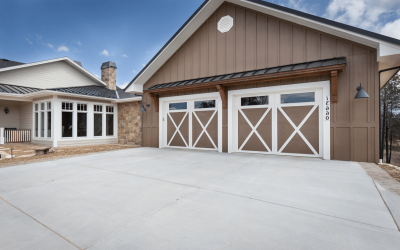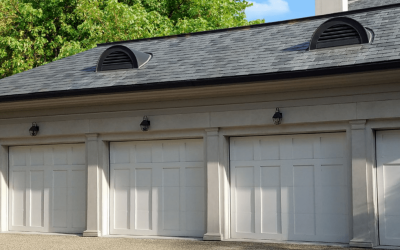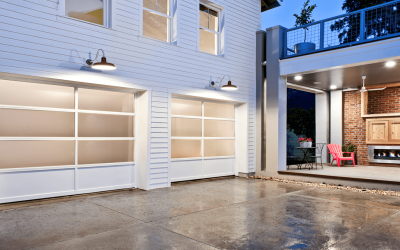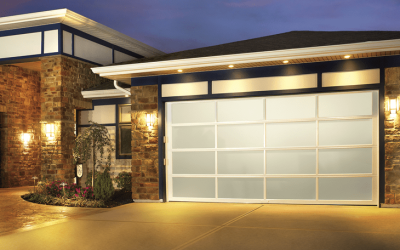Garage doors have revolutionized the way we use our garages, offering a secure and convenient access point for our vehicles and other storage items. They are an essential part of any modern home and have come a long way from the traditional manual garage doors of the past. With the advancement in technology, garage doors have become more complex and efficient, with various components working together to ensure smooth operation.
One of the critical components of a garage door system is the garage door spring.
Since garage door springs are constantly in use, they are susceptible to wear and tear over time. As such, it’s essential to understand the consequences of a broken garage door spring and the importance of proper maintenance to avoid costly repairs and safety risks.
What is Garage Door Springs?
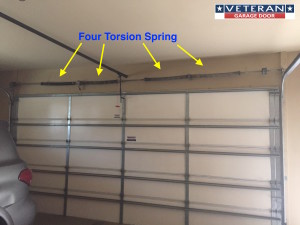
The two main types of garage door springs are extension and torsion springs. The garage door is raised and lowered by torque produced by springs situated above the garage door. On the sides of the door are extension springs that employ tension to raise and lower the door. The weight of the garage door is balanced by the two different types of springs, making it simpler to lift and close.
Role of Garage Door Springs
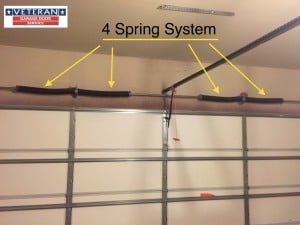
Any garage door system must include garage door springs as a necessary component. Without them, the garage door would be impossible to lift or close manually. Garage door springs work by balancing the weight of the garage door to make it easier to lift and close.
Torsion springs are typically located above the garage door and use torque to lift and lower the door. They have a longer lifespan than extension springs and are generally considered to be more reliable. Torsion springs are usually made of tempered steel and are designed to withstand a significant amount of weight and stress.
On the other hand, extension springs are located on the sides of the door and use tension to lift and lower the door. They are typically shorter and more compact than torsion springs. Extension springs are usually made of oil-tempered steel and are designed to stretch and contract as the garage door moves.
Together, the two kinds of garage door springs balance the door’s weight. For heavier garage doors, extension springs are often employed, whereas torsion springs are used for lightweight doors. The size and weight of the garage door will determine the size and kind of spring required. Choose the proper spring type and size for your particular garage door with the aid of a garage door expert.
It’s important to note that garage door springs can be dangerous when they break. They are under a significant amount of tension and can release that tension suddenly when they break. For this reason, it’s essential to hire a professional to replace garage door springs, rather than attempting to do it yourself. A professional garage door technician has the training and equipment needed to replace garage door springs safely and efficiently.
Signs of a Broken Garage Door Spring
It’s essential to know the signs of a broken garage door spring to avoid any further damage or safety risks. Here are a few indicators that your garage door spring may be damaged or worn out:
Difficulty Opening or Closing the Door
If you have to put in more effort than usual to open or close the garage door, it clearly indicates that your garage door springs might be damaged or worn out. The springs counterbalance the weight of the door, making it easy to operate. When one or both of the springs break, it becomes harder to lift the door. You may also notice that the door moves slower than usual or that it stops mid-way.
There are Loud Noises while Opening or Closing the Garage Door
Another sign that your garage door springs are wearing out is a loud noise when opening or closing the door. You may hear a loud bang or snap, indicating that the spring has broken. The noise is a result of the sudden release of tension from the spring. A broken spring can also cause the garage door to slam shut, which can be dangerous and pose safety risks.
The door Appears Unbalanced or Tilted
If one of the springs on your garage door is damaged or broken, the door may appear unbalanced or tilted. One side of the door may be higher than the other, making it difficult to close or open. An unbalanced garage door is not only unsightly, but it also poses safety risks.
Visible Damage or Wear on the Springs
Regular inspection of your garage door springs can help identify visible damage or wear. Springs can become rusted, stretched, or damaged over time, which can affect their performance. If you notice any visible damage or wear on your garage door springs, it’s time to replace them.
Consequences of a Broken Garage Door Spring
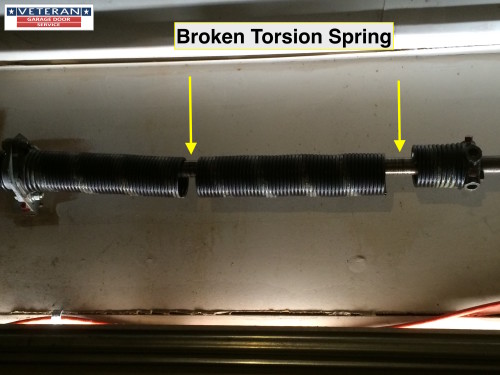
A broken garage door spring can have significant consequences, including safety risks and expensive repairs. Here are some of the consequences of a broken garage door spring:
Inability to Open or Close the Door: The most obvious consequence of a broken garage door spring is the inability to open or close the door. It could lead to inconvenience and security risks for you and your property.
Safety Risks to People and Property: A broken garage door spring can be dangerous and pose safety risks to people and property. A sudden release of tension in the spring could cause the door to slam shut, potentially injuring anyone standing nearby.
Damage to the Garage Door Opener or Other Parts: If the garage door spring breaks, it can cause damage to other parts of the garage door system, including the opener. Replacing these parts can be expensive and time-consuming.
Cost of Repairs or Replacement: The cost of repairing or replacing a garage door spring can be high, depending on the type of spring and the extent of the damage.
Preventing a Broken Garage Door Spring
Regular maintenance and inspection are essential in preventing a broken garage door spring. Here are some tips on how to prevent a broken garage door spring:
Regular maintenance and inspection of garage door springs: It is essential to have a professional technician inspect and maintain your garage door springs at least once a year.
Replacing springs before they break: Garage door springs have a limited lifespan, and it is recommended that you replace them before they break.
Hiring a professional for repairs and replacement: Attempting to repair or replace garage door springs on your own can be dangerous. Always hire an experienced technician to handle any repairs or replacements.
Conclusion
In conclusion, garage door springs are a critical component of your garage door and require proper maintenance and inspection to ensure they function correctly. Ignoring the signs of a broken spring can lead to significant consequences, including safety risks, damage to property, and costly repairs. Therefore, it is crucial to have regular maintenance and inspection of your garage door springs by a professional technician.
At Veteran Garage Door Service, we understand the importance of garage door spring maintenance and provide high-quality repair and maintenance services for all types of garage door springs. Our team of expert technicians is highly trained and experienced in diagnosing and repairing all kinds of garage door spring issues. We use only the best quality springs and parts to ensure your garage door operates smoothly and efficiently.
Whether you need a routine maintenance check or a broken spring replaced, our team is always ready to help. We provide fast and efficient services to ensure minimal disruption to your daily routine. We also offer competitive pricing and excellent customer service to ensure your satisfaction.
Please don’t wait until it’s too late, contact us today to schedule your garage door spring maintenance and inspection services. Our team is ready to ensure your garage door functions smoothly and safely for years to come. Trust us to handle all your garage door spring repair needs.
Veteran Garage Door Repair
3415 Custer Rd #103
Plano, TX
75023
(972) 432-5695






